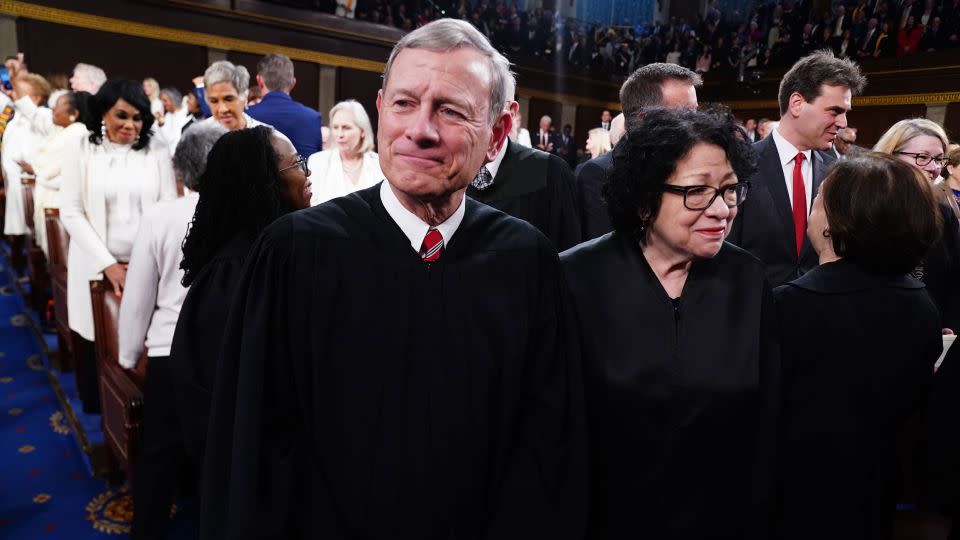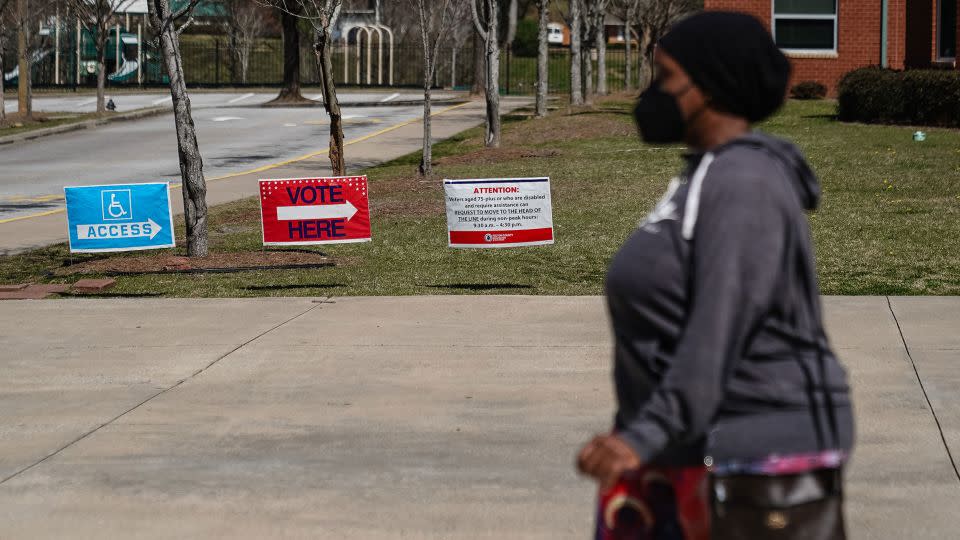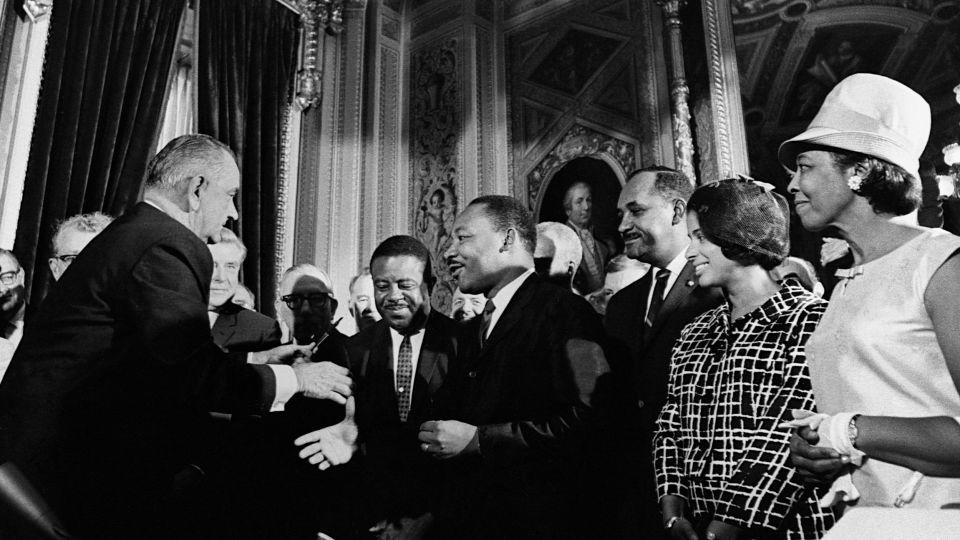A controversial Supreme Court decision could hurt Biden in November
A Supreme Court decision related to the election could determine the presidential victor this November, but it has nothing to do with former President Donald Trump.
A new study from the liberal-leaning Brennan Center for Justice has found that the racial turnout gap — the difference in the turnout rate between White and non-White voters — has consistently grown since 2013, when the Supreme Court dismantled what civil rights activists called the Voting Rights Act’s (VRA) most effective weapon against racial discrimination in voting.
In that Shelby County v. Holder decision, a conservative majority on the high court gutted the VRA by eliminating a key enforcement mechanism in the landmark law. That provision required states and jurisdictions with a history of racially discriminatory voting practices to get “preclearance” — or federal approval — for any new electoral changes such as redistricting, voter ID rules or polling operations.
Chief Justice John Roberts wrote in the Shelby decision that “our country has changed” for the better, and that it no longer needed to take special steps to prevent voter discrimination based on race. As proof, he said that Black voter turnout had come to exceed White voter turnout in many of the Southern states covered by the VRA’s preclearance provision.
The Brennan Center study, however, said that the Supreme Court’s interpretation of the data “was far too narrow.” It said that since 2012, the racial turnout gap grew almost twice as quickly in jurisdictions that had previously been covered by the VRA’s preclearance provision than in other, similar parts of the country.
The study also said the “narrow” racial-turnout disparity that the high court heavily relied upon in its Shelby decision was based in part on the 2012 presidential election. The smaller turnout gap between White and Black voters in that election did not occur because America had profoundly changed — it was likely because Black voters were highly motivated to return former President Barack Obama to office.
The Brennan Center study addresses patterns in the turnout gap since 2008, but the lack of comparable data for earlier years means it cannot directly address how the current patterns compare to the pre-Obama years.
Yet the study’s conclusion bolsters critics of the Shelby decision. Voting rights advocates said after that high court ruling that Black and other non-White citizens would find it more difficult to vote. They predicted that Southern GOP-led states in particular would unleash a wave of voting restrictions leading to what some now call “Jim Crow 2.0.”
Their suspicions were apparently confirmed. The Shelby ruling opened the floodgates to a wave of restrictive voting laws passed by GOP-led state legislatures. Many of those states were previously covered by the VRA’s preclearance provision.
Within 24 hours of the Shelby decision, officials in at least three of those states — Texas, Mississippi and Alabama — announced they would pass, or had already enacted, stricter voter ID laws.
How the racial turnout gap could decide November’s election
The elimination of the VRA’s most effective tool for fighting racism could also have another impact. It could determine the winner of this year’s presidential election, says Lawrence Goldstone, author of “Imperfect Union: How Errors of Omission Threaten Constitutional Democracy.”
Goldstone says this year’s presidential election will probably be decided in seven battleground states. Many of those states, like Georgia and North Carolina, have large non-White voting populations. If voter restrictive laws — ones that would have been banned under an earlier version of the VRA — deter enough of those voters, that could swing the election.

Biden, for example, won the presidential election in 2020 even though Shelby had been in place for seven years. But his triumph came down to narrow margins in a handful of battleground states, determined in part by a massive turnout of Black voters in states such as Georgia.
After Biden’s victory the GOP-led legislature in Georgia passed a series of voter restriction laws, which many voting rights advocates say were aimed at Black voters. Those new voting restrictions would most likely have been halted under the VRA before the Shelby decision.
“Just about every prognosticator has said that the key to this election is going to be won on turnout,” Goldstone says. “If you suppress turnout even a little with razor-thin margins, then putting that finger on the scale is the same as putting a brick on it. You are increasing the odds that one side will prevail.”
Putting a thumb on the scale was part of the intent of the Shelby decision, Goldstone argues. He says the high court’s conservative majority had ample evidence from lower court decisions that racially discriminatory voting practices persisted. They ignored it although they knew their decision would hurt Black voters, who tend to vote for the Democratic Party, he says.
Goldstone says the conservative majority ignored ample evidence from two lower court decisions — one from a federal court judge appointed by former President George W. Bush — which concluded that the VRA’s preclearance was still needed because overt discrimination in voting persisted. The lower court decisions cited several examples, including one from Alabama’s Shelby County itself, of overt voter discrimination that had been deterred by preclearance.
“The Supreme Court is a political institution every bit as much, or even more perhaps, than a jurisprudential one,” he argues. “It was clear that these discriminatory voting practices would be reinstituted and were not going to be aimed at White people.”
Yet there were others who say the Shelby decision was an affirmation of the civil rights movement.

Two years after the Shelby decision, Horace Cooper, a commentator and former constitutional law professor, says he opposed Section 5 of the VRA because it contradicted the Rev. Martin Luther King Jr.’s vision of America. He says the purpose of the law was not to give a preference to any particular racial group.
“As Martin Luther King Jr. said, we want a society that judges people not by the color of their skin but by the content of their character,” says Cooper, who taught at George Mason University in Virginia.
Cooper said the US Justice Department has been using the VRA to pressure various states and municipalities into guaranteeing a prescribed number of racial minorities in political office.
“That’s not what Martin Luther King contemplated, and that’s not a colorblind society,” Cooper says.
The bloody history behind the Voting Rights Act
The law was passed in 1965 after King led an epic voting rights campaign in Selma, Alabama. The defining moment of that campaign was the “Bloody Sunday” march in March 1965 at the Edmund Pettus Bridge, where televised footage of White Alabama state troopers attacking Black marchers protesting for the right to vote galvanized the US Congress to act.
The passage of the Voting Rights Act did more to break the back of Jim Crow policies than any other civil rights law. The US would not have elected President Obama as its first Black president without the power of the VRA. Obama won his first term in 2008 in part because of a massive turnout of Black voters in Southern states like North Carolina — and a fully functioning VRA that ensured their access to the polls.

Roberts’ hostility toward the VRA has been has been well-documented. He tried to limit the reach of the law when he was a young lawyer with the Reagan administration. He grew to see it as an assault on what he would later call the “equal sovereignty” of states.”
The high court’s jurisprudence toward voting rights may evolve in surprising ways, though.
Last year, Roberts shocked many observers when he and another conservative justice, Brett Kavanaugh, joined the court’s liberals in upholding what remains of the VRA — a decision that protected Black voters in Alabama. He affirmed a lower court decision that found that Alabama had violated the VRA when it drew a congressional district plan that discriminated against Black voters.
Still, the impact of the Shelby decision lingers.
Last year, lawmakers passed at least 17 laws in 14 states that make it harder for eligible Americans to vote, according to the Brennan Center.
The passage of those laws reverses what had been a steady expansion of voting rights, says Goldstone, adding that the US once also denied the right to vote to not only Black people but women, Native Americans, Asians, Jews and Catholics. But the country “slowly and tortuously expanded our sense of what democracy means to include all sorts of people,” he says.
“Shelby County is one of those decisions that put the brakes on that democratic progress,” he says. “Historically, it’s not going to be a well-thought-of decision.”
If the racial turnout gap determines the next president, Shelby’s dubious legacy may take another hit.
Roberts’ declaration that the country no longer needed the “strong medicine” of the VRA’s key provision may not only seem naïve. It will offer more validation to critics who say the Shelby decision was nothing more than this: a cynical ploy to reduce the power of non-White voters in a rapidly diversifying nation.
John Blake is a Senior Writer at CNN and the author of “More Than I Imagined: What a Black Man Discovered About the White Mother He Never Knew.”
For more CNN news and newsletters create an account at CNN.com
